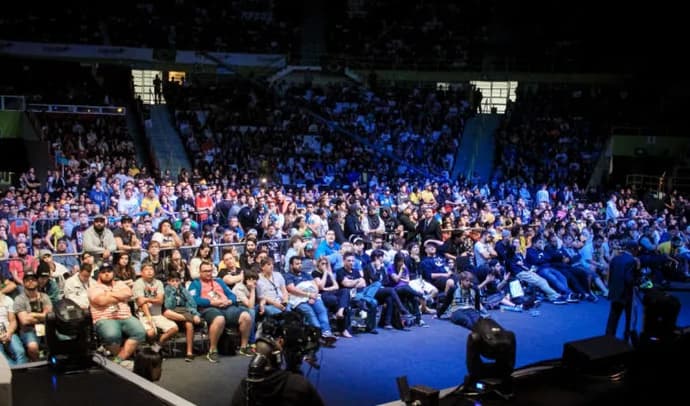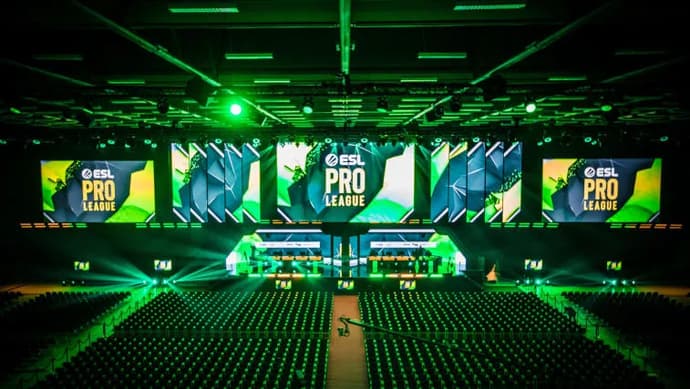
ESL Pro League Format Issues
Last week, the 16th season of the ESL Pro League, a prestigious tournament series from ESL, started. For the past seven years, the best teams have been fighting for a solid prize fund at the leading venues on the world stage. However, at present there is a whole layer of format shortcomings that participants have to put up with. It is about the problems of the current format of the ESL Pro League that we propose to talk about in the next article.
Where did it all begin?

2015, ESL, together with its sister platform ESEA, announces a new series of tournaments called Pro League. Initially, the championship was divided into several stages, based on the regional distribution of participants (Europe + North/Latin America), gathering the strongest in the global final. While the first stage was held online with the participation of invited participants in the format of the group stage (double circle), to participate in the final, the best teams gathered on stage to determine the strongest.
This went on for several years - the organizers increased the number of participants from season to season and increased the prize fund. However, the format remained the same - regional divisions with tickets to the global Pro League season finals.
However, starting in 2020, the organizers decided to cheer up the format of the series, succumbing to the general panic amid the emergence of franchise championships. As a result, at the beginning of the year, ESL signed the so-called "Louvre Agreement" with leading organizations, guaranteeing their participation in the championship.
But the introduction of the new format had to be postponed until better times, as the coronavirus intervened in the game. As a result, the 11th and 12th seasons had to be played online, again dividing the participants by region. However, ESL Pro League Season 13 put everything in its place and finally presented the updated format to the viewer.
Now we had a fixed number of partners automatically moving between seasons. The winners of the ESEA regional divisions, as well as the best teams in the ESL rating, were added to the company. Since then, we have seen an increase in the number of partners of the organizer, a change in the qualifier system, but the main essence remained the same - the teams got involved in a mysterious month-long marathon.
Why is the ESL Pro League format so bad?

Duration
Firstly, the main disadvantage of the ESL Pro League format is the length of the tournament. During the month, 24 teams marinate in one place. At the same time, the group stage, divided into four weeks, automatically forces the participants to look for additional forces for an even performance at all stages of the tournament.
Let's look at an example: The team plays in Group A, shows an excellent result and directly goes to the quarterfinals. However, in anticipation of the next match, almost a month will pass, during which time the team will lose part of its form. At the same time, the participants of group D, who made it to the playoffs, will play with courage and are unlikely to lose their condition in a few days. At the same time, the team from Group A will not have any advantage in terms of preparing for the playoffs, because the name of the opponent will be known only at the end of the group stage in its entirety, moreover, at the end of the first round.
At the same time, history knows only one example, when a team that passed from the first group to the playoffs became the winner of the championship. This example is Heroic at ESL Pro League Season 13.
Level of competition

Nobody argues with the fact that small teams should be given a chance to prove themselves. This was the case with BIG, Gambit Esports, FURIA and ENCE, which later established themselves on the TIER-1 scene. However, only in the last two years we have seen a huge number of teams that come to the championship without any chance and suffer five defeats in the group stage without showing any struggle.
You don't have to look far for an example - within the framework of ESL Pro League Season 13, we observed the failure of Team oNe (0-5 in group C). In the next season of the ESL Pro League, three outsiders acted as such "passengers" at once - Bad News Bears, Evil Geniuses and all the same Brazilians from Team oNe. At ESL Pro League Season 15, we again saw failures from LookingForOrg, Evil Geniuses, Sprout and Party Astronauts.
Whether the viewer wants to watch the matches "in one gate" for a whole week is a rhetorical question.
Format of qualifications and requirements for the composition of participants

From the previous problem, we smoothly flow into the next drawback - the format of qualifications. Implementing a new qualifier system in the form of Conference is a cool idea. But in just two seasons, we got a bunch of examples when from this series we get completely disassembled participants who become outsiders of their groups.
In addition, at those same qualifiers, there are countless "passing" teams from Asia and Oceania, which crumble even against the background of representatives of the TIER-3 scene in Europe.
Just look at the start of the 16th season of the ESL Pro League, where Endpoint failed in group A, and FTW is completely out of chance in group B (two defeats out of two at the time of writing). Moreover, there is confidence that Eternal Fire and HEET will continue to take into account similar ones.
And here we have to look at the rules of the series, namely the requirements for the composition of the participants.
Let's analyze the situation using the example of the FTW team. The Portuguese got to ESL Pro League Season 16 from the Conference, but immediately after that they sold two of their leaders, clearly losing quality. Speaking in fact, now this is not the team that qualified for the championship, even if the organization was able to keep the core.
As a result, a logical question arises: Isn't it time to introduce a hard rosterlock for Conference participants? Still, the opportunity to play in such a prestigious tournament should be accompanied by at least some struggle and intrigue in groups until the last round. Yes, and watching the countless 2-0 - pretty tired.
In general terms, many scene leaders have already spoken out about the unsuccessful ESL Pro League format. Our turn has come. In the meantime, no changes are expected, we suggest that you follow ESL Pro League Season 16 with EGW.
 Liquid02.10.22 11:05Bo52:3
Liquid02.10.22 11:05Bo52:3 VitalityESL Pro League Season 16
VitalityESL Pro League Season 16 Vitality01.10.22 14:00Bo32:0
Vitality01.10.22 14:00Bo32:0 G2 EsportsESL Pro League Season 16
G2 EsportsESL Pro League Season 16 Liquid01.10.22 09:30Bo32:1
Liquid01.10.22 09:30Bo32:1 Cloud9ESL Pro League Season 16
Cloud9ESL Pro League Season 16 G2 Esports30.09.22 13:15Bo32:1
G2 Esports30.09.22 13:15Bo32:1 NaViESL Pro League Season 16
NaViESL Pro League Season 16 Vitality30.09.22 09:30Bo32:0
Vitality30.09.22 09:30Bo32:0 OutsidersESL Pro League Season 16
OutsidersESL Pro League Season 16 Cloud929.09.22 13:00Bo32:1
Cloud929.09.22 13:00Bo32:1 FaZe Clan
FaZe ClanThe current ESL Pro League Season 16 runs from August 31st to October 2nd in Malta at the Salini Resort site. 24 teams from Europe, CIS, North and South America compete for a total prize pool of $835,000. The winner of the tournament will receive the main prize of $175,000, as well as tickets to BLAST Premier: World Final 2022 and IEM Katowice 2023.



